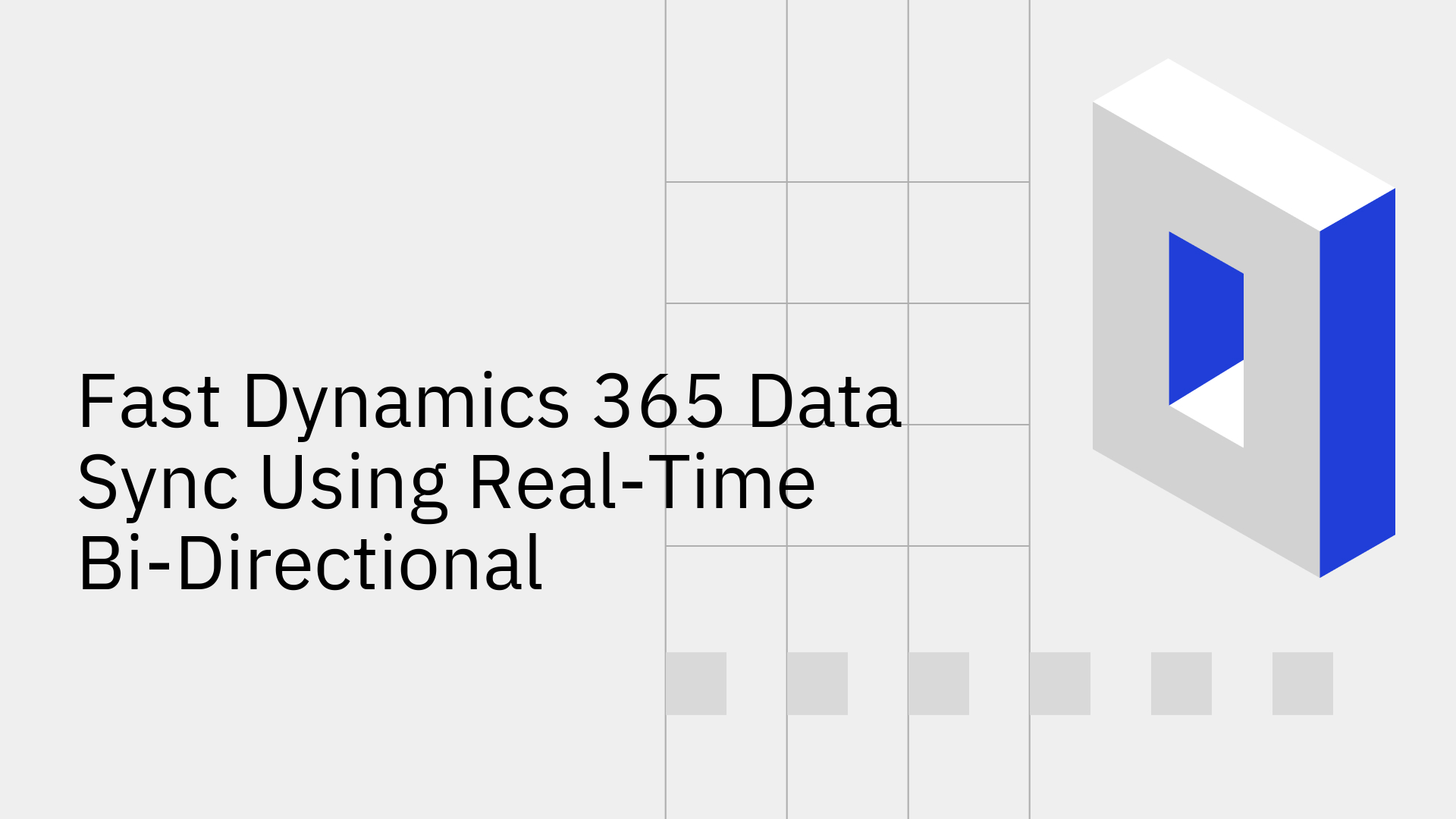For businesses running on Microsoft Dynamics 365, data is a critical asset. However, this data is often spread across multiple systems like other CRMs, ERPs, and databases. This fragmentation creates significant challenges, including data silos, operational delays, and inconsistent information that undermines decision-making. Traditional synchronization methods, which are often one-way or batch-based, only worsen the problem by introducing stale data and requiring constant manual reconciliation. The modern solution to achieve a single source of truth and complete data consistency is real-time, bi-directional synchronization.
The Problem with Traditional Dynamics 365 Data Sync Methods
Many organizations struggle with outdated and inefficient methods for their Dynamics 365 data sync needs. These approaches often create more problems than they solve, leading to significant operational friction.
- Data Latency: Batch processing and scheduled syncs mean teams are often working with information that is hours or even days old. This latency can delay critical business processes and lead to poor decision-making.
- Manual Processes: Many native and third-party tools require significant manual setup, custom coding, and ongoing maintenance, which is both time-consuming and prone to human error [2].
- Data Inconsistencies: One-way data pushes frequently lead to discrepancies and duplicate records between systems, creating confusion and unreliable reports that can result in significant financial losses [3].
- Lack of Scalability: Custom-coded scripts and certain native integrations struggle to handle large data volumes or complex business logic, leading to performance bottlenecks and sync failures.
What is Real-Time, Bi-Directional Synchronization?
To overcome the limitations of traditional methods, modern integration relies on two core concepts: bi-directional and real-time sync.
- Bi-Directional Sync: Data flows in both directions between connected systems. When a record is updated in Dynamics 365, the change is reflected in the connected application, and any change in that application is instantly synced back to Dynamics 365.
- Real-Time Sync: "Real-time" means changes are propagated almost instantly, typically within milliseconds. There are no scheduled batches or delays.
When combined, these principles create a perfectly aligned data ecosystem, eliminating silos and establishing a single source of truth across the organization. This is the foundation of modern automated bi-directional sync software for CRM and ERP integration.
How Stacksync Enables Fast, Bi-Directional Dynamics 365 Data Sync
Stacksync is an enterprise data integration platform purpose-built to deliver fast, reliable, and bi-directional Dynamics 365 data sync without the typical complexity.
Our platform addresses the core challenges of data integration with powerful features:
- Real-Time Speed: Sync data changes in milliseconds to support mission-critical operations.
- True Two-Way Sync: Automatically keeps Dynamics 365 and other systems like Salesforce, NetSuite, or databases in perfect harmony.
- Supports Standard and Custom Objects: Sync any data you need, including custom fields and objects unique to your business logic.
- No-Code Setup: Configure complex synchronization workflows in minutes without writing a single line of code.
- Scalability: Built to handle millions of records from day one, with no infrastructure for your team to manage.
- Smart API Rate Limit Management: Automatically manages API calls to prevent hitting quotas on Dynamics 365 or connected apps, ensuring uninterrupted service.
- Robust Issue Management: Avoid silent failures with a dedicated dashboard that lets you monitor, retry, or revert any sync issues with a single click.
With Stacksync, you can connect Microsoft Dynamics 365 with two-way sync integration to over 200 other applications effortlessly.
Key Benefits of Real-Time Bi-Directional Sync for D365
Adopting a real-time, bi-directional approach for your Dynamics 365 data sync delivers transformative benefits across the organization.
- Create a Single Source of Truth: Ensure sales, finance, support, and operations teams all work from the same up-to-date information.
- Boost Operational Efficiency: Eliminate manual data entry and corrections, freeing up teams to focus on high-value tasks.
- Accelerate Business Processes: Speed up cycles like quote-to-cash by instantly syncing orders, invoices, and customer data between D365 and your ERP.
- Enhance Decision-Making: Power your BI tools and analytics with live, accurate data from across your entire tech stack.
- Improve Customer Experience: Give your sales and support teams a complete, real-time view of every customer interaction and history.
These advantages are made possible by Stacksync's real-time sync features, which are designed for enterprise-grade consistency.
Common Use Cases for Dynamics 365 Data Sync
Real-time, bi-directional sync unlocks powerful new workflows for teams using Dynamics 365.
- Integrating D365 and Salesforce: Keep sales teams aligned by syncing accounts, contacts, opportunities, and custom objects between the two leading CRMs, ensuring no lead or update is missed [7].
- Connecting D365 with Databases (PostgreSQL, Snowflake, etc.): Replicate D365 data to a database in real-time to power internal tools, custom applications, or advanced analytics without hitting D365 API limits.
- Streamlining ERP and D365 Workflows: Sync customer data, sales orders, and invoices between Dynamics 365 and ERPs like NetSuite or SAP to create a seamless, automated financial workflow.
- Modernizing EDI Processes: Replace slow, file-based EDI with real-time API integrations. A bi-directional sync for Microsoft Dynamics 365 EDI allows instant updates on orders, shipments, and inventory with trading partners.
Get Started with Stacksync
Setting up a real-time, bi-directional sync for Dynamics 365 is a straightforward, code-free process with Stacksync.
- Connect Your Apps: Securely connect Dynamics 365 and your other application in one click using OAuth or other secure methods.
- Choose Your Objects: Select the standard and custom objects you want to sync.
- Map Your Fields: Let Stacksync automatically map fields or customize them as needed. Our platform handles data transformations for you.
- Activate Your Sync: Launch your real-time, bi-directional sync and watch data flow instantly.
This entire process is managed, empowering your teams to build and maintain integrations without relying on engineering resources. Transform your data strategy today with Stacksync.
